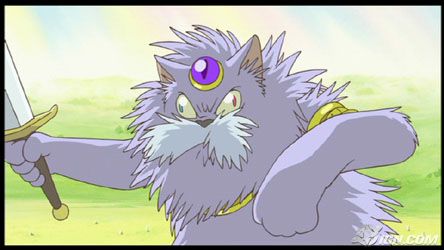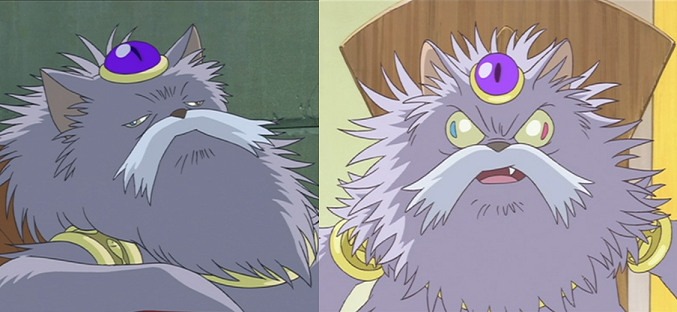

She is always reactive to the events and cats surrounding her, never imposing her wants or force of attitude to the King (you would relish a cutting comeback to the Cat King’s many uses of, “Ciao, babe”, too). Having criticized even the best Ghibli films for static characters, I found myself annoyed by how little care Morita and Yoshida took to Haru. Reiko Yoshida’s screenplay – adapted from Aoi Hiiragi’s manga of the same name (Hiiragi wrote the Whisper of the Heart manga) – is a slapdash craze of jumbled subplots and ideas that makes it difficult to say if the film has any discernible themes. To say that the plotline to The Cat Returns goes in many different directions is an understatement. Where some of Ghibli’s fantasies can have malevolent backdrops, there is nothing in Morita’s film too frightening for the youngest children.

Or, if you prefer, The Cat Returns has a pinch of Kafka, a touch of Errol Flynn swashbuckler movies, a smidgen of that kitschy local artist selling their portraits of animals playing poker or other human activities, and maybe a drop of illegal substances that would pair well with more psychedelic films. If it holds any advantage against the likes of Nausicaä of the Valley of the Wind (1984) or Spirited Away (2001), it is that The Cat Returns is the closest thing Ghibli has ever produced that resembles a fever dream. The Cat Returns is fantasy with little else underneath. Their best fantasy films all have a meaningful subtext where the characters learn about themselves or others around them, and the best Ghibli protagonists grow into those new situations. Studio Ghibli has rightly been associated with captivating fantasy adventures – works transporting the viewer to dreamlike places with otherwise unimaginable sights. Magical circumstances require that Haru leave as soon as possible before she is subjected to this unwanted marriage.

While discussing the misunderstanding that has transpired, Haru is catnapped by the King’s subjects and is forcibly transported to the Cat Kingdom. Later, she will encounter Muta, who leads her to the Baron. Haru, probably too drowsy to fully comprehend what is going on, gives a non-committal response to the Cat King’s proposal to arrange her marriage to Prince Lune, and this is interpreted by the Cat King as an acceptance. The Cat King offers Haru gifts of dead mice and catnip for saving his son’s (Prince Lune) life.

The night after saving a cat from an oncoming truck, she is visited by a royal procession of cats who are mostly standing upright. Haru Yoshioka is a quiet schoolgirl who sits in the second-to-last row near the oblong window in her classroom – she is obviously our protagonist for this anime. The two holdovers from Whisper of the Heart are two cats named Muta and the Baron (who only becomes animate in Whisper during a fantasy sequence). So began production on The Cat Returns, directed by Hiroyuki Morita, and a spin-off (not an official sequel) of Whisper of the Heart that concentrates on the adventures a schoolgirl who can talk to cats. One project included an offer from a Japanese amusement park to have Ghibli create a twenty-minute short film on cats. But Kondo’s unexpected death in 1998 lengthened the careers of Miyazaki and Takahata, as well as forcing fellow Ghibli co-founder and producer Toshio Suzuki to find others within the studio who could helm future projects. That film’s director, Yoshifumi Kondo, seemed to be the heir apparent. When Whisper of the Heart appeared in Japanese theaters in 1995, Studio Ghibli proved in the middle of its most productive period that somebody within the studio other than Hayao Miyazaki or Isao Takahata could direct a successful film.


 0 kommentar(er)
0 kommentar(er)
